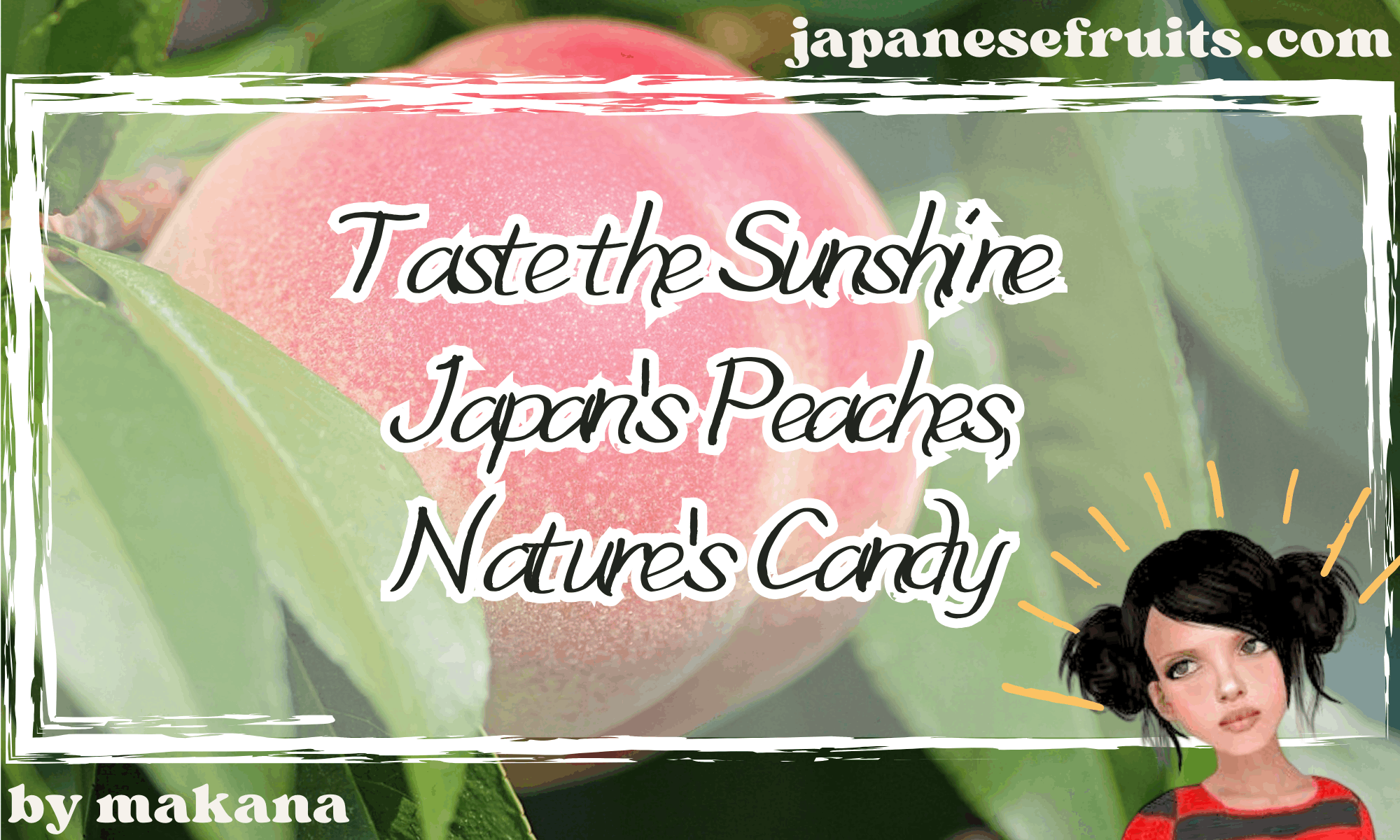Hello everyone! This is Makana.
Today I’m excited to share someAs summer approaches, the season of peaches, often called the queen of Japanese fruits, arrives. Japanese peaches, surprisingly large, fragrant, and incredibly sweet, have captivated fruit enthusiasts worldwide.
The Allure of Japanese Peaches
Japanese peaches stand out globally due to their exceptional quality. Each peach is carefully cultivated, resembling a jewel in its beauty, sometimes too large to hold in both hands. The skin color ranges from pale pink to vibrant red, while the flesh varies from pure white to golden, depending on the variety.
The most distinctive feature is their astonishing sweetness. While many peaches worldwide have a sugar content of around 10 degrees Brix, premium Japanese varieties often exceed 15 degrees Brix. This sweetness is not monotonous; each variety offers a delicate flavor and aroma.
Regional Specialties
Japan boasts various peach-producing regions, each with its unique characteristics:
- Yamanashi Prefecture: Known for luscious peaches bathed in ample sunlight.
- Fukushima Prefecture: Produces large peaches nurtured in fertile soil.
- Nagano Prefecture: Offers high-sugar content peaches due to significant temperature differences.
- Wakayama Prefecture: Cultivates early-ripening peaches in its mild climate.
Notable Japanese Peach Varieties
Yamanashi’s Finest
- Hakuho: Characterized by its juicy, low-fiber flesh that seems to melt in your mouth.
- Hikawa Hakuho: An early-ripening variety popular for its balanced texture and refined sweetness.
- Hakuto varieties (Kanogawa Hakuto, Ichimiya Hakuto): Known for their beautiful white flesh and elegant sweetness.
- Ogon Peach: Distinctive for its golden flesh and mango-like aroma.
Fukushima’s Pride
- Akatsuki: A representative variety with juicy, dense flesh and a good balance of sweetness and acidity.
- Date Hakuto: A highly regarded late-ripening variety known for its large size and intense sweetness when fully ripe.
Nagano’s Specialties
- Kawanakajima Hakuto: A large variety with firm flesh that becomes increasingly sweet as you chew.
- Nectarine: Characterized by its smooth skin and balanced sweetness and acidity.
Wakayama’s Early Varieties
Wakayama specializes in early-ripening Hakuho varieties, with Shimizu Hakuto being particularly notable for its high sugar content and balanced acidity despite being an early variety.
Selecting and Enjoying Japanese Peaches
Identifying Ripe Peaches
- Look for peaches with red-colored skin, especially those with a white area at the bottom (opposite the stem).
- Choose medium to large peaches that feel heavy for their size.
- Small white spots on the surface are actually a sign of sweetness.
Storage and Ripening
- Ripe peaches should be consumed quickly.
- Firmer peaches can be ripened at room temperature wrapped in newspaper.
- Chill peaches in the refrigerator 2-3 hours before eating for a juicier taste.
Best Ways to Enjoy
- Fresh Japanese peaches can be eaten with the skin on for maximum flavor.
- If peeling, start from the top for a clean removal.
- The side opposite the seam is often the sweetest part.
Japanese Peaches on the Global Stage
Comparison with Foreign Peaches
Japanese peaches are significantly larger (often over 10cm in diameter) and more expensive than their Western counterparts. They are prized for their incredibly soft texture, intense sweetness, and delicate aroma.
Cultural Significance
In Japan, peaches symbolize longevity and protection against evil. They are a luxurious summer delicacy, often given as high-end gifts during the o-chugen season.
Global Recognition
Japanese peaches are gaining recognition among affluent consumers and fruit enthusiasts worldwide, particularly in Asian luxury markets. The cultivation techniques, including individual fruit bagging and rigorous quality control, are also drawing international attention.
Conclusion
Japanese peaches represent more than just a fruit; they are a testament to Japan’s agricultural expertise and food culture. Their unparalleled quality, diverse flavors, and cultural significance make them a true summer treasure of Japan. For visitors to Japan, tasting these exquisite peaches, especially from July to September, can be an unforgettable experience that showcases the depth of Japanese culinary traditions.

Leave a Reply